June 29, 2024
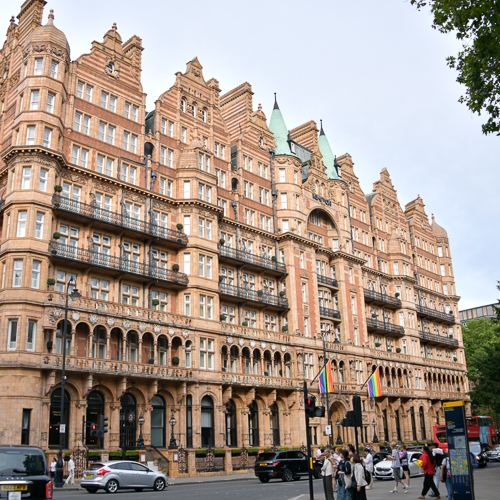
One of my favorite buildings in this area is the Kimpton Fitzroy. It is famous for its thé-au-lait (“tea with milk”) terracotta frontage, which includes statues of four queens – Elizabeth I, Mary II, Victoria, and Anne.
From 1900, when it was opened, until 2018, it was known by its original name of Hotel Russell, where early meetings of the Russell Group of universities took place. But the Fitzroy part of its present name is a nod to its architect, Charles Fitzroy Doll.
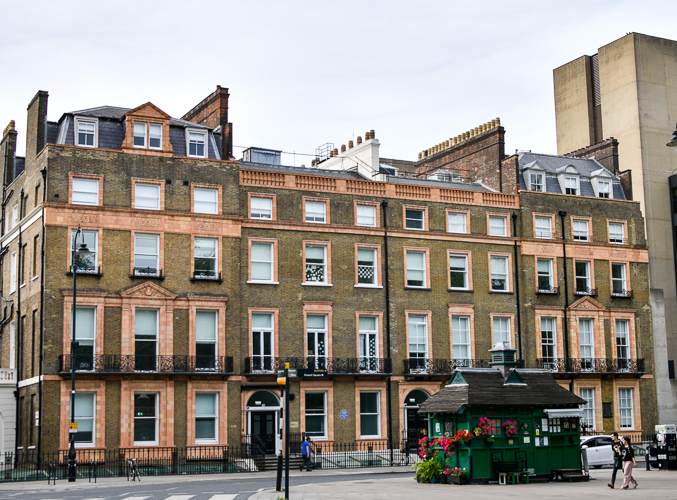
These Georgian homes are not far from the Kimpton. It is said that Charles Fitzroy Doll was asked to improve them, so he put on the pink window surrounds, which is where we get the term “dolled up,” although I really have my doubts about that one.
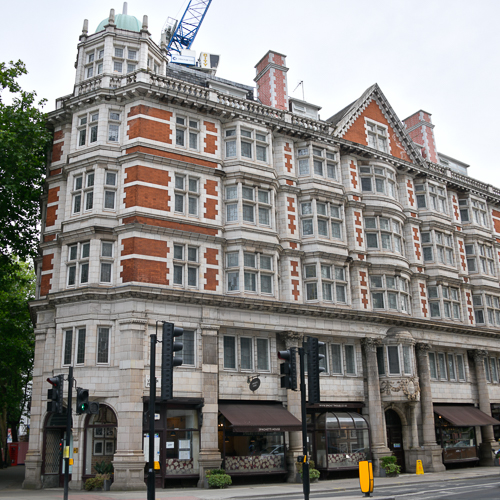
This is the frontage of Sicilian Avenue, a pedestrian shopping parade resembling an open-air arcade that diagonally runs between Southampton Row and Bloomsbury Way.
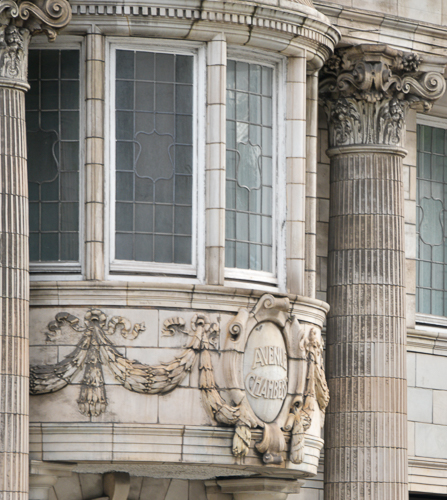
A hint of the ornamentation that adorns the building
The open area, which is very Edwardian and designed by Robert Worley in 1906, is undergoing major reconstruction, so this building is all that you can see of the shopping parade.
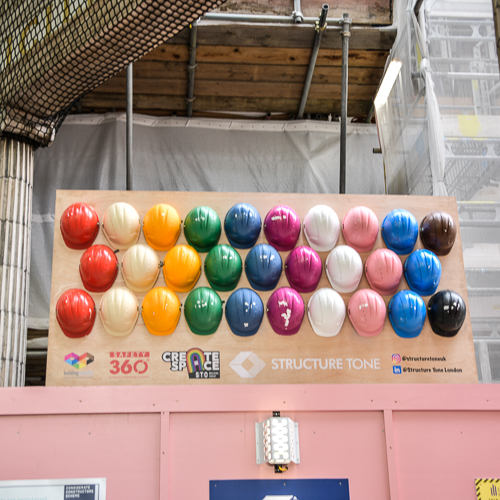
The name is thought to reflect Worley’s architectural style. Sicilian Avenue is also said to have been the first purpose-built pedestrianized street in London.
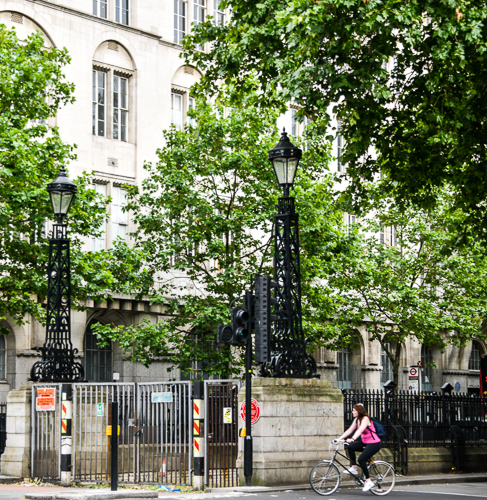
These two black iron columns are the entry to an old abandoned trolly line that served this area.
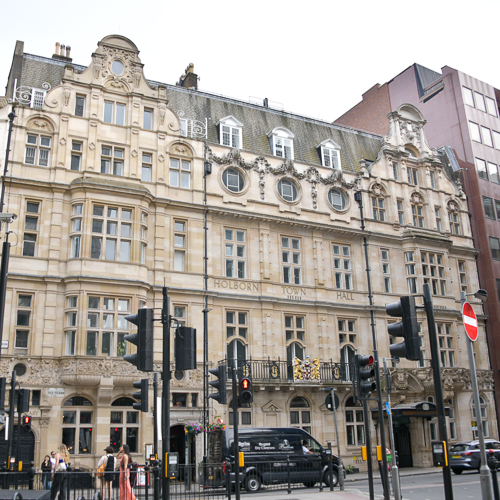
When there was a need for a new Holborn Town Hall, William Rushworth expanded an existing French Renaissance-style building that had opened as a library in 1894.
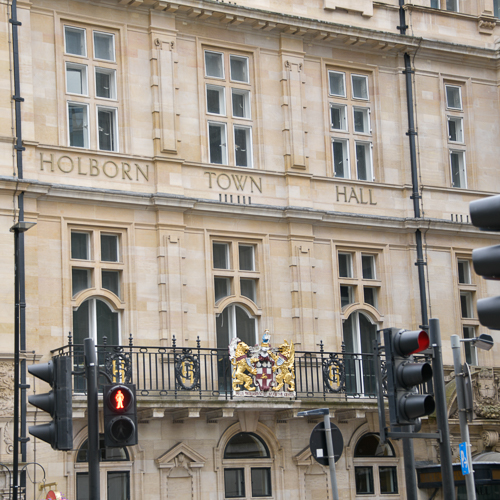
The Metropolitan Boroughs were established in 1900 by an Act of Parliament to provide local government, which had previously been the purview of vestries and district boards.
The London Government Act 1963 officially recognized Greater London and redrew the Metropolitan Boroughs into the 32 boroughs, plus the City of London of today.
This left many Town Halls with no purpose, and most of them are as architecturally lovely as Holborn.
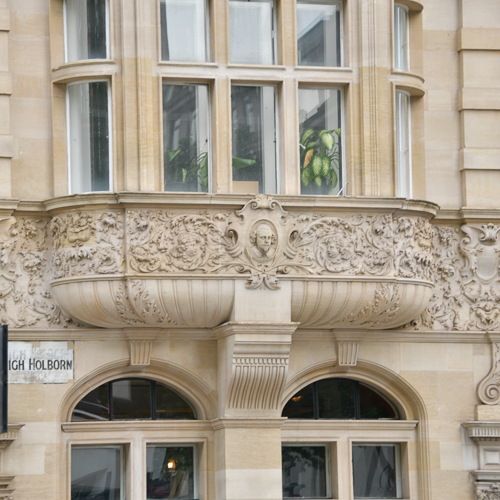
William Shakespeare on the balcony of Holborn Town Hall
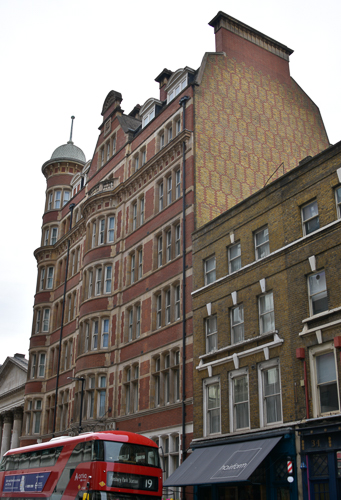
This is just an interesting random building in the Bloomsbury area, but I loved the brickwork on the side.

This is the clock tower of St. George’s Bloomsbury Church. This stepped tower is influenced by Pliny the Elder’s description of the Mausoleum at Halicarnassus and is topped with a statue of King George I in Roman dress. The portico is based on that of the Temple of Bacchus in Baalbek, Lebanon.
When Henry VIII left the Pope in the lurch,
The Protestants made him the head of the church,
But George’s good subjects, the Bloomsbury people
Instead of the church, made him head of the steeple.
— Horace Walpole
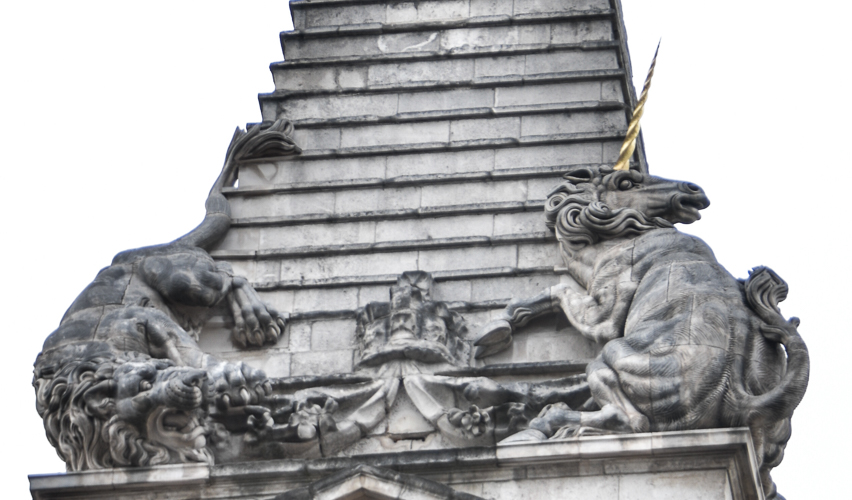
These stunning statures of fighting lions and unicorns symbolize the then-recent end of the First Jacobite Rising.
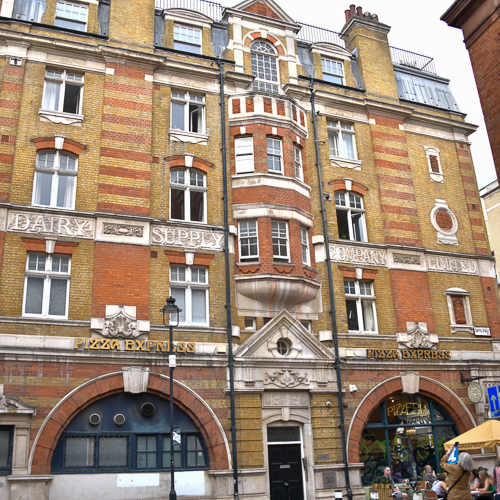
This lovely building, which now houses a Pizza Express was built in 1888 . George Barham founded the Express Country Milk Supply Company, transforming the milk supply industry by bringing milk into London by railway from rural farms rather than relying on city-dwelling cows.
His timing was fortuitous, as most of London’s supply of cows had to be culled due to an outbreak of cattle plague in 1865. His business prospered, and by 1885, the “Express Dairy Company Limited” was bringing 30,000 gallons of milk into the capital every night.
Barham also invented the milk churn. The Dairy Supply Company, specialized in selling milk-related hardware.
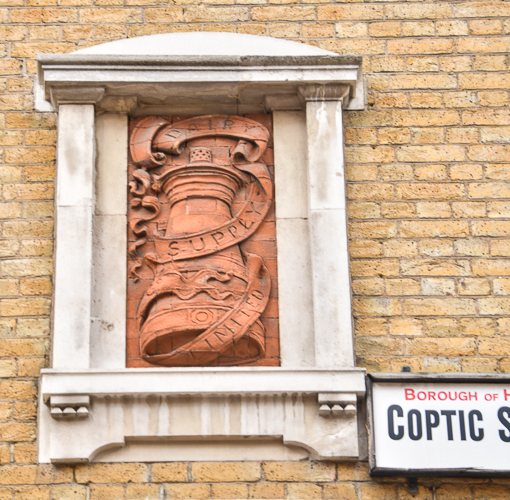
*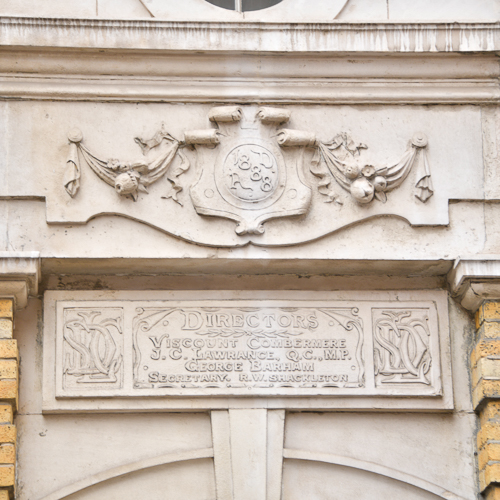
Here are some random shots of buildings in the Bloomsbury Area that I found interesting.
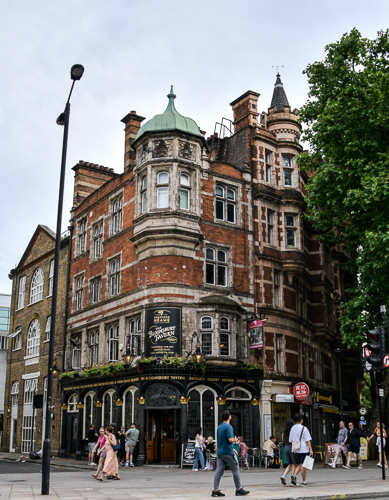
The Bloomsbury Tavern dates to 1856
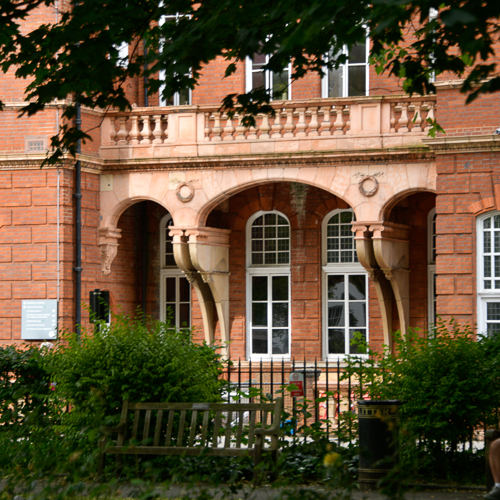
A very different type of bracket at the entry of the National Hospital of Neuropathy
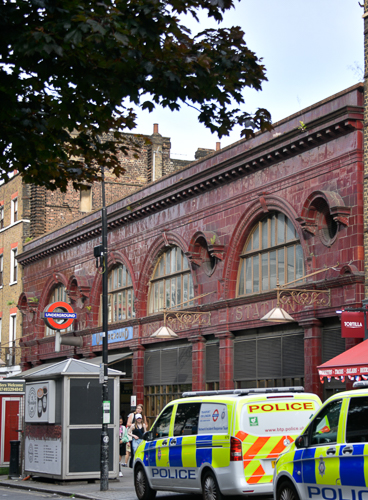
There was a time when many of the tube stations in London were faced with this oxblood-colored faience. This Russel Square station is the work of London architect Leslie Green and is an example of the Modern Style, also known as British Art Nouveau. I love this oxblood color.